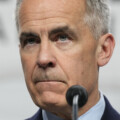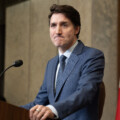Former Clerk of the Privy Council Michael Wernick recently reposted a study on LinkedIn regarding hydrogen and global export markets. He asked if Canada would “dither and bicker” whilst other nations moved to capture the opportunity. It’s a question on a lot of minds.
In part because it wasn’t always this way—the Berger Commission slamming the brakes on the Mackenzie Gas Pipeline was the exception. Nowadays, it seems a project getting approved is the exception, to say nothing of the empty—or not as full as they used to be—inboxes at our regulatory assessment agencies. Given the talk about shiny new industrial projects, involving new forms of energy and critical minerals all needing tens of billions of dollars to build, we’d best figure out what’s the dicker and bicker all about. And what’s it going to take to fill the inboxes?
Answering that question must start with a recognition that Canada’s economic engine—our energy and resource sectors—came of age under much different circumstances. When the U.S. (and the East) needed natural gas, we’d sell it. Oil? We’d supply that too. Few studies or centres of excellence were needed. Market access, an investment climate you could set your watch by, policy coherence across the board, and know-how combined to build generations of prosperity. The same dynamic, with other players, successfully built Canada’s other resource and energy sectors.
But at the beginning of this century, three big changes occurred: (1) America’s energy emergence, (2) Canada’s global climate commitments; and (3) the growing rights of Canada’s Indigenous Peoples. They’ve vexed growth-hungry communities, corporations, and governments alike. They caused national tensions and political divisions.
America’s energy emergence
Much of Canada’s economic history is a story of two markets: our own and the United States. In the case of the oil and gas sector, it was simple. But in the early part of this century, improvements in drilling technology began to undermine our “you need it, we got it” approach to the U.S. market. By 2008, President Obama’s “all of the above” energy strategy set the U.S. on the path to becoming what it is today, the global leader in oil production and LNG exports.
Amongst the first to be crowded out of the U.S. market was western natural gas. Under Premier Klein, the Province of Alberta’s revenues were dominated by natural gas royalties. And yet the slow unwinding of Canada’s continental position yielded little notice. As gas revenue tracked downward and expansion of oil revenues tracked upwards, the loss of natural gas markets passed quietly.
The real change got noticed as U.S. oil and gas production grew with each passing year. By 2015, along with the bruising impact of oil price arbitrage, Canadian oil became optional instead of a must-have. This would have been unheard of a decade earlier. The customer who would reliably walk in the front door and place an order had opened up his own place.
Canada’s climate commitments
Those walking in the door now are Environmental, Social, and Governance (ESG) consultants. That must have something to do with another big change in Canada in the last 20 years: Climate change.
The 1997 Kyoto Protocol came into force in 2005. (Irony alert: after ratification by Russia.) Canada’s reduction targets—first, and perhaps telling set to show a greater ambition than the U.S.—were problematic. The level of effort required by Canada to achieve the reductions pledged in ‘97 (or since) required a massive effort and specifically a massive effort in comparison to most others.
The EU leaned into the common, not national pledges, knowing that the collapse of the Soviet bloc would keep them in the Kyoto good books. The U.S., under the legislative leadership of Al Gore, would fail to ratify Kyoto. For Canada, that was a particularly inconvenient truth. The other pledging nations were industrial economies with far different emission profiles than Canada (save for Australia). China and the G7 had no reduction obligation. China loved the Kyoto Protocol, if for no other reason than it gave them free rein. They’d work overtime to make sure that whatever replaced Kyoto would be similarly toothless for them. (And I think they accomplished just that in the Paris Accord.)
But for reasons that aren’t obvious to me, we ratified the Kyoto Protocol in 2002, and in so doing placed our energy and energy-intensive, trade-exposed commodity sectors at the centre of a massive, improbable challenge. And we pressed on as our major trading partner and sole energy export market turned away from Kyoto and made tracks to become our energy competitor.
Other options, such as a ring fence treatment of energy-intensive and trade-exposed sectors, or a domestic plan to displace hydrocarbons with electrons, or a bilateral climate deal with the U.S., were, I suppose, judged to be the lesser.
Yet, in climate change, absolute emissions matter absolutely. Absolute reductions matter absolutely. Canada helping the U.S. displace coal emissions, for example, may be one big reduction we could help achieve, back then and today. This bilateral approach wasn’t without precedent—the sale of Canadian hydro to the U.S., for example, and jointly addressing shared environmental concerns had a positive track record. Thus the Great Lakes Agreement, Acid Rain Treaty and the Montreal Protocol, and the environmental chapter added to NAFTA.
I can account for one policy debate on a joint Canada/U.S. climate approach, in the lead-up to Copenhagen. But prior to or since there appears to have been little attention paid to the matter. Oddly, given the frequent tensions concerning energy, climate, and Presidential Permits, our energy trade escaped attention in the renegotiation of NAFTA.
So since 2002, we’ve pledged to do the nearly impossible. And because it’s Canada, the political debate on climate became a subset of regional tensions and pandering to political bases and biases. It’s about something else, not climate. And it’s about wedges and conflict, not consensus. Bicker and dither found a new home, custom-built. Around the same time, the other new house on the block was just being framed out.
Rights of the Indigenous Peoples of Canada
If you want to dither and bicker, get a lawyer. If you want to excel at it, get a team of lawyers schooled in Section 35.
While we were unknowingly going through a major shift in our limited energy markets, and governments were stumbling confidently towards climate policy inertia, we experienced the first real impacts of Section 35 and court decisions concerning Crown obligation and resource development. The 2005 Haida Nation and Taku River Tlingit decision put an exclamation point on the growing need to settle the unfinished terms of how our nations would come together as one. At its basic level, that is what the petitioners sought in Delgamuukw. They wanted in.
What followed, regrettably, was more litigation. At this point, with the treaty and claims processes resembling a consultant cottage industry offering few tangible results, and the Courts setting precedents for future litigation and projects, what may have been a better choice—fire the lawyers, get off your wallet, and start negotiating solutions—was swamped by an offloading of Crown obligation onto project proponents with predictable results. Followed by more litigation. The government treasury and lawyers were (and remain) governed by different but complementary incentives. One motivated to put off paying the tab, the other paying its tab by putting off deals.
If investors were puzzled by our climate plans and pledges, and the downward slide in accessible markets, they were absolutely chilled by the prospects of a judicial review application grinding their project to dust. And more often not, because of anything they did but predictably because the Crown fell short of its end of the project consultation process.
But we’ve since seen tremendous progress in the form of substantial financial agreements between energy firms and affected communities. Proponents of the Mackenzie Gas Pipeline (revived by Exxon decades after Berger), for instance, eventually concluded a common carrier, basin opening agreement inclusive of a material ownership stake by the Indigenous group. Ultimately the project failed, but the model would live on.
The capital markets know-how of Indigenous corporations increasingly equaled those on the other side of the table. The Haisla, under the able leadership of Ellis Ross, secured a transformative agreement in connection to the LNG Canada project. Northern Gateway proponents set terms for a material ownership stake in its project by Indigenous communities. The Mackenzie model found a new home. Access and benefits agreements that were the norm became table stakes for bigger deals.
Operators and Indigenous communities have stepped up with better, more innovative efforts that are translating into material returns for operators and Indigenous communities alike. Haida’s lasting impact is found daily in Canada’s resource sectors.
But in my view, the impact on the actual Crown is far from the sea change needed. The last twenty years of governments working just hard enough to avoid the unfinished business of defining how our nations come together, has and will continue to hold all of us back from achieving the future our nations deserve. It’s time to square up with Canada’s first peoples.
From my perspective, in the midst of all of this, I see an alternative. It’s rooted in The Great Canadian Compromise—something that doesn’t get much airtime of late. People under 30 may have to Google it. But I believe it’s alive and well and in the heart of every Canadian. Or at least the vast majority of Canadians who live in the space known as “fair and reasonable.” We are nothing if not fair and reasonable. We’ll even apologize for being fair and reasonable. And by nature, we don’t have much time for the dither and the bicker. We’re focused on what matters—family, community, and building a future.

And the spirit of compromise also lives in the “just get it done” climate consensus amongst Canadians. This is a good thing, particularly now that climate change has outstripped climate policy. But politicians should worry. Sticking to talking points is a risky strategy when towns disappear through fire or atmospheric rivers and infrastructure routinely collapses in these now frequent climate-related weather events. Canadians are fond of our lifestyles. Get tagged with placing policy purity ahead of our three squares at your peril.
The alternative also reflects the tragic circumstances imposed on Ukraine by the despot ruler of Russia. The crushing impact of global disruptions in oil and gas markets is an experience we should learn from a guard against. And while I am not a McKinsey consultant, it does appear that the national interest of two counties like Canada and the United States (oil and gas producing counties who export and have domestic alternatives to lessen our own dependency) would be well served by lowering domestic use of oil and gas—over time and to all but the strategically necessary—while increasing exports.
Done wisely, we would inoculate ourselves from shocks in energy markets and lock in the long-term competitive advantage of greater certainty on price and climate-ready infrastructure, with energy sources that have lower GHG emissions.
And by shifting exports beyond the continent, we would provide a greater and more stable supply of hydrocarbons to those developed and developing countries that are our allies. The actions of the despot in Moscow has made the indelible point that while “the world had enough oil and gas” is theoretically correct, who controls the oil and gas we had enough of matters more in the real world.
In sum, it seems pretty clear to me the great Canadian climate compromise comes in three steps.
1. Continue plans and investments, equivalency agreements, and otherwise to achieve emission reductions in industrial, resource, and sectors in areas of shared federal/provincial jurisdiction. There’s considerable agreement on those elements.
Place a hold on the federal retail carbon tax. Somewhere along the way, it became an article of faith to some that a retail carbon tax is an absolute element of an effective climate plan. The dither and bicker here is about the purity of a plan with a carbon tax versus others without. It’s about theoretical reductions and taxonomy and pathways. But more importantly, the U.S. has taken a pass on a carbon tax. So much for must-have.
Personally, I’m more concerned that the price signal approach is too slow. On a risk-adjusted basis, it’s too slow and subcritical for the scale of effort needed. As I said, climate change has outpaced climate policy.
2) Initiate and conclude a comprehensive energy and climate trade agreement with the U.S. Aim for a transformational agreement where our energy and climate actions are enabled by a truly free trade energy market that simultaneously swaps domestic use of hydrocarbons for electrons and creates an exporter of oil and gas with greater returns for both counties and security for our allies—those who are exposed to the risks, vagaries, and vulgarities of having despots and dictators as their energy supplier.
In short, make Canada and the U.S. a low-carbon economy through transformational investment in climate-friendly, climate-ready energy systems, one that happens to also be a strategic petroleum reserve for the free world.
3) And lastly—and this is the really important part—deal with the Indigenous people in large and upfront. Canada has been transformed by energy and we will be transformed again, this time by energy and climate change. Our aim should be to emerge as a stronger Canada. And our first priory, our obligation, is to put Canada’s first peoples first. How that is done should not be a matter for the treasury. They’ll be fine. Our Indigenous peoples and Crown will need to sort that out. In the meantime, the Crown’s organizing principle should be that of someone who knows the account is due. The tab must be cleared.
I’m going to get off my soapbox now.
I didn’t need one before. Friends, particularly one friend, would toss around these and other random thoughts over a late supper at Ottawa’s famous Colonade pizza. Some ideas would make their way into speeches, some into policy and action. That hasn’t been an option of late. Never again is the sadder truth.
But I felt it was necessary to say and it demands to be said, that ours is not a story of bickering and dithering. The can-do reputation was earned by dint of effort. And compromise. It has not failed us yet. Nor should it now.
Recommended for You

Laura David: Red pill, blue pill: Google has made its opening salvo in the AI-news war. What’s Canadian media’s next move?

The Notebook by Theo Argitis: Mark Carney’s first major tests

The Weekly Wrap: Trudeau left Canada in terrible fiscal shape—and now Carney’s on clean-up duty

Ben Woodfinden: Lament for an ‘elbows up’ nation



